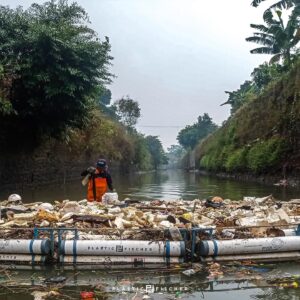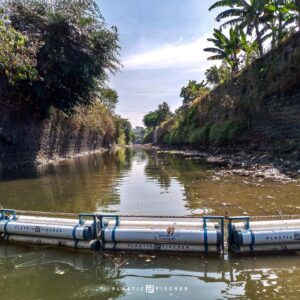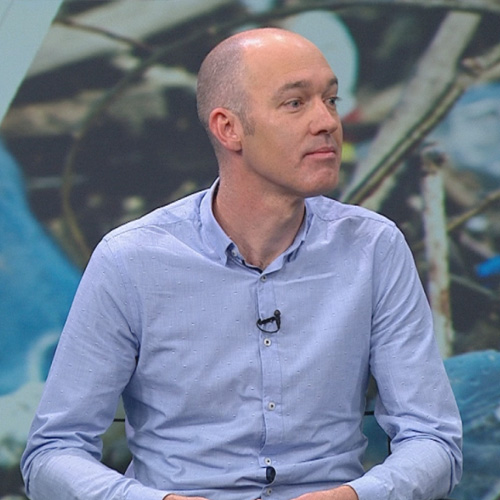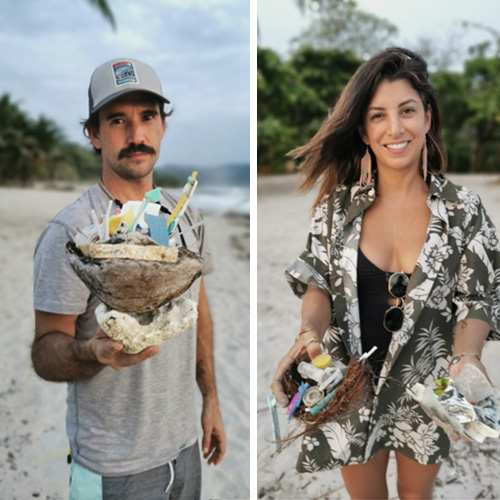
With 80% of ocean plastic originating from over 1,000 rivers, managing existing pressures on these systems is key to building climate resilience and improving the quality of life for those living along their shores.
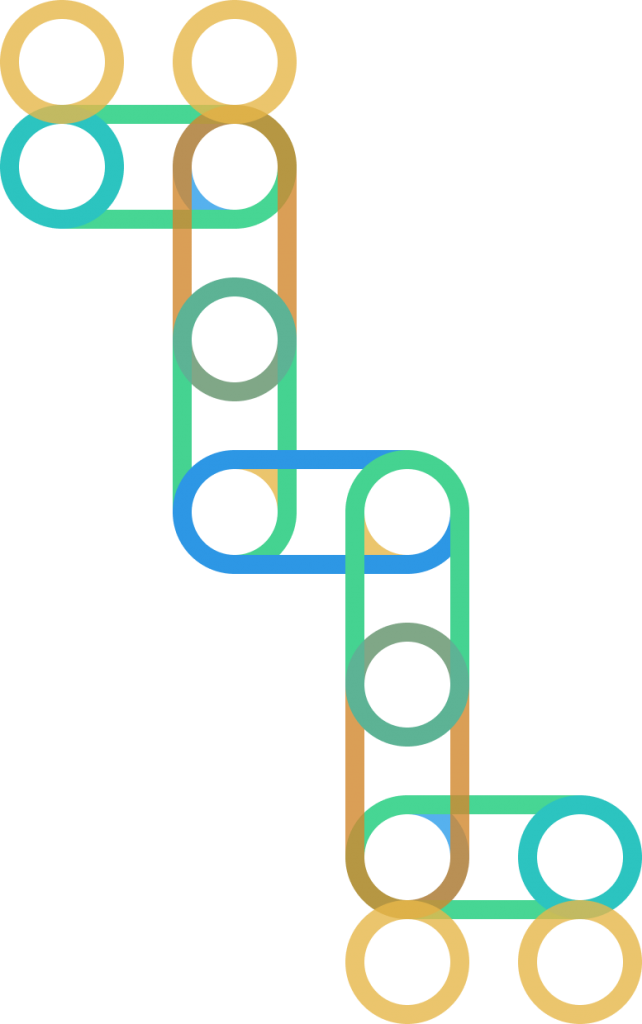
Rivers are the highways enabling plastic waste to reach our oceans. Studies in 2017, concluded that 90% of river-borne plastic waste that flushes into the oceans is conveyed by just a handful of large, continental rivers, including the Nile, Amazon, and Yangtze, the world’s three longest rivers.
Cleaning up these rivers could go a long way toward solving the problem of plastic waste in our oceans.
Initiatives that deserve support.
The Ocean Cleanup
The Ocean Cleanup, a non-profit organization, is developing and scaling innovative technologies that both intercept plastic waste from rivers before it reaches the ocean and remove legacy plastics already polluting marine environments. Their ultimate goal is to rid the world’s oceans of plastic entirely, making their own efforts obsolete in the long run.
One of their key innovations is the Interceptor™, a river cleanup system designed to stop plastic at its source. First developed in 2017 in collaboration with TME, a Dutch machine-building company, the prototype was rigorously tested in Zuidland, South Holland, before being deployed in Jakarta, Indonesia, in 2019. The first-generation Interceptor™ was installed in the heavily polluted Cengkareng Drain, where it quickly proved effective in capturing waste before it could reach the ocean.
More Info
The Ocean Cleanup
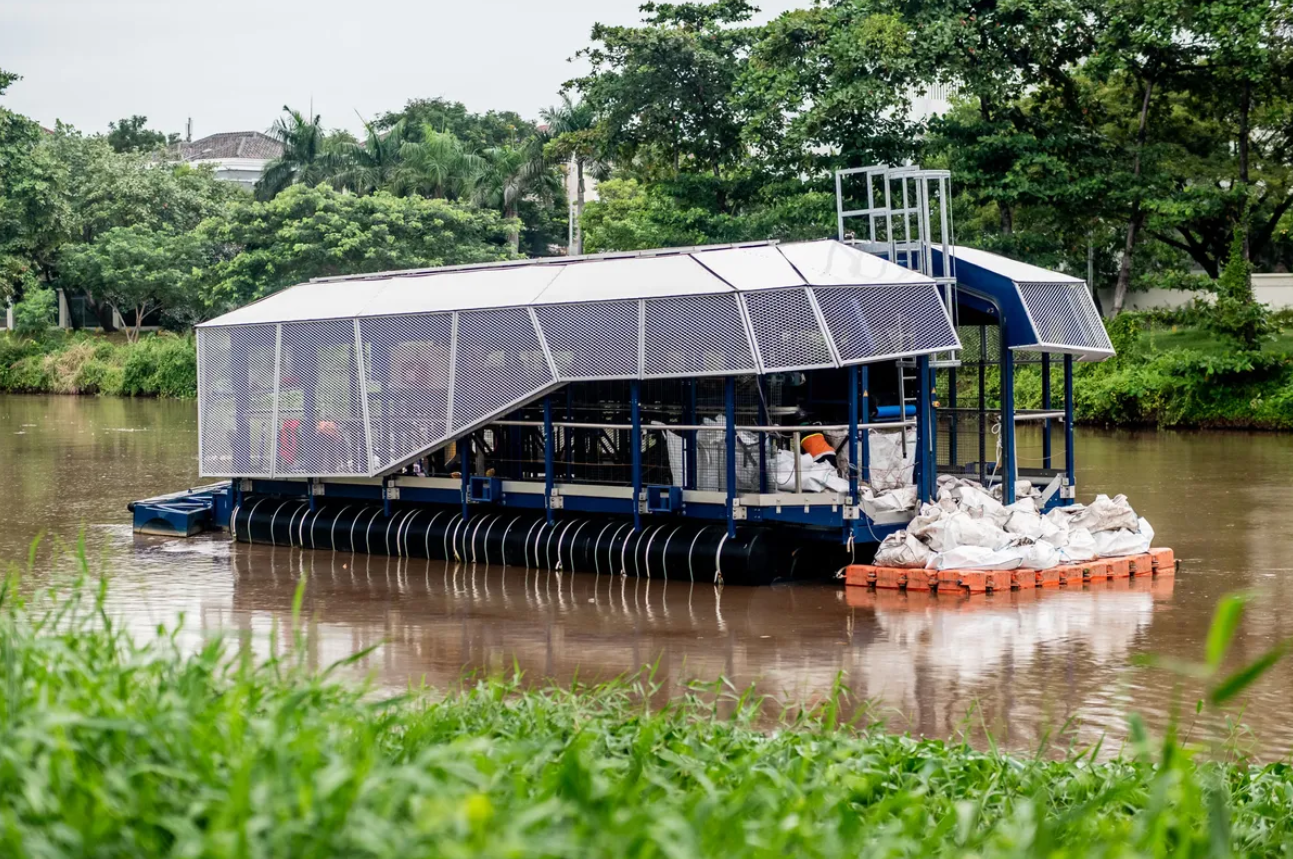
Plastic Fischer
This German company develops low-tech plastic collection systems for rivers. The company’s TrashBoom was first deployed in the Citarum River and rivers of Bali in 2019 and was rewarded with exposure by the WEF and international media. Plastic Fischer believes in locally built solutions and creating social impact by creating jobs and environmental impact. A social enterprise that shared the construction manual of their TrashBooms “open source” on its homepage, the company has been financed through “Plastic Fischer Credits” – the analogous for Carbon Credits – for businesses and does not depend on donations. Combining its low-tech approach with the working business model allows the company to scale quickly in all relevant countries around the world.
More info:
Plastic Fischer
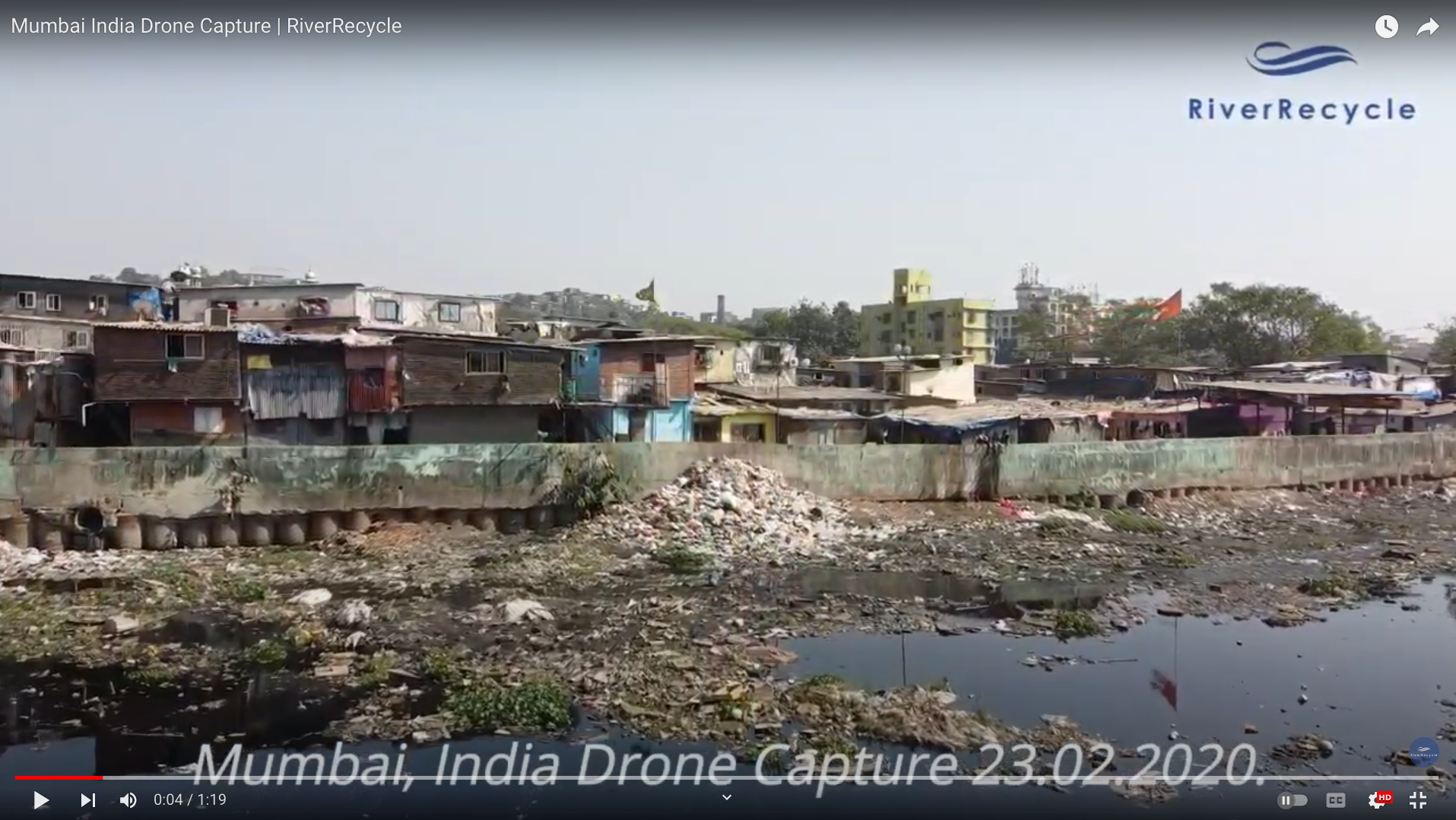
RiverRecycle
RiverRecycle aims to stop ocean plastic pollution by implementing financially sustainable plastic waste collection and recycling solutions. The company’s goal is to stop over 60% of ocean plastic accumulation through rivers by establishing 500 river cleaning and plastic recycling points on the banks of the world’s most polluting rivers. With a circular economy approach the company helps communities develop a sustainable waste management system while cleaning their rivers from waste pollution. RiverRecycle facilitates and support chemical and mechanical recycling, with the aim to reach “zero waste to landfill” sustainable results in waste management. Part of the profit from its operations is reinjected in the local economy to fund the system. The technology has been succesfully deployed in India, Ghana, Bangladesh, Indonesia and the Phillipines.
More info:
RiverRecycle

Litter4Tokens
A brilliant initiative that empowers people living in impoverished communities around South Africa to not only clean up litter and restore the environment around them, but also restores a sense of pride in giving them the means to provide for their families. In vulnerable areas across the country, plastic and other litter often makes its way into river systems and the ocean due to a critical lack of recycling infrastructure and education.
Launched by ex-surfer Clare Swithenbank-Bowman in 2015, Litter4Tokens has to date prevented more than 600,000 bags of litter from reaching the ocean, while employing over 1,600 people who would otherwise struggle to survive. Waste collected in exchange for tokens makes its way back to retailers or recycling plants, and retailers then restock token shops with essential items thanks to help from donors.
The initiative is supported by PETCO, a Producer Responsibility Organisation within South Africa’s recycling landscape that uses its revenue to drive recycling activities, support collectors, guide product design and build the required local recycling infrastructure necessary to keep the PET value chain moving.
In the US and South America, Trash4Tokens has taken the same spirit to the Americas. The project seeks to instill pride and cleanliness by putting respect back into the communities, and encouraging hard work whilst employing and educating the nation on how to provide for a cleaner future
More info:
Litter4Tokens
PETCO
Trash4Tokens

The Litterboom Project
Through the hard work of a very small team, The Litterboom Project (TLP) has managed to prevent over 700 tons of plastic from reaching our oceans. Because roughly 90% of marine plastic pollution originates from river systems, TLP founder and CEO Cameron Service knew the only way to make an impactful difference was to adopt a proactive approach, which has since started scaling into a systematic upstream program.
Service launched the project in 2017, initially targeting hotspots along six rivers in the lush coastal province of KwaZulu-Natal, South Africa. With assistance from the Pristine Earth Collective, TLP made its way to Cape Town in June 2020 and is now active in 10 main river systems within these provinces. A floating boom is anchored across a river, acting as a catchment for all the waste flowing downstream. A trained team made up of people from the surrounding communities stay on site throughout the day, continuously removing plastic and sorting for recycling.
More Info:
The Litterboom Project (TLP)

Plastic Whale and Vepa
On a mission to create cool things with waste collected from river, canal and beach cleanups across the Netherlands, Plastic Whale has not only turned plastic fishing into a fun community activity that anyone can join, but they’re also showing the world how easy it is to create economic value from the things we throw away. With the slogan “we collect, we create, we educate”, Dutch furniture company Vepa teamed up with Plastic Whale and LAMA Concept to create some very special designer pieces after fishing up more than 150,000 PET bottles and turning them into PET foam/felt. Even the company’s own residual waste goes back into creating new products. The Plastic Whale project is for every company that wants to give substance to its sustainability targets.
More info:
Plastic Whale
Vepa
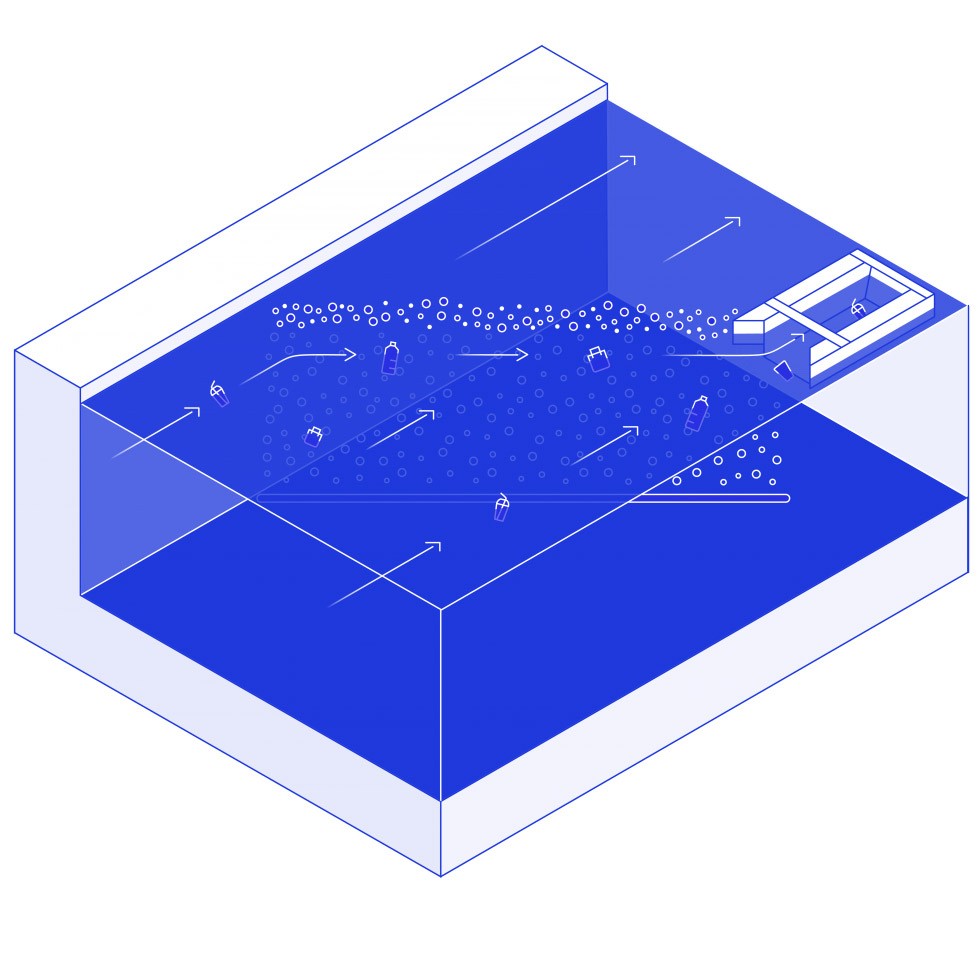
The Great Bubble Barrier
The bubble barrier is a clever intervention that catches plastic over the full width and depth of rivers and prevents plastic from ending up in the ocean without interfering with regular river activities. It can be up and operational 24/7 in very little time. Creating a bubble curtain using a perforated tube on the bottom of the waterway, air is pumped through to generate a screen of bubbles that blocks plastics and directs suspended plastics to the surface. The diagonal placement of the bubble curtain in the waterway guides plastic waste to the side and into the catchment system. As simple as it is clever. The approach has been successfully implemented in Amsterdam where it traps in one location 85 kilos of plastic a month, almost a tonne of plastic each year.
More info:
The Great Bubble Barrier
If you know of any other PET-powered initiatives supporting river ecosystem restoration please share with us any information that you think we might find useful.
As the ancient proverb goes, “The best time to plant a tree was 20 years ago. The second best time, today”. If you want to take a step towards fostering a regenerative mindset, or improve the impact your current value chain has on the environment, we’d love to hear from you and help support the good work you’re doing. Get in touch with us and take advantage of our extensive global network, and work together to restore some of our fragile ecosystems.
Sign up to the AdaPETation network and share with us what you can do to contribute to the United Nations Decade on Ecosystem Restoration.
Share it
THE HISTORY OF PLASTIC
Throughout the history of plastic, PET has been crucial in keeping food fresh with lightweight and durable packaging solutions that have helped reduce food waste for almost a century. Learn all about the invention of plastic and the important role it has played feeding people and saving the lives of humans and elephants in the adaPETation® timeline of the history of plastic.


